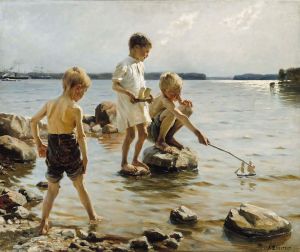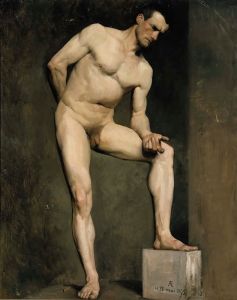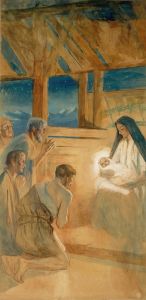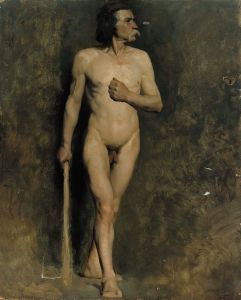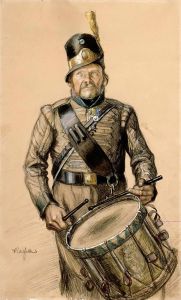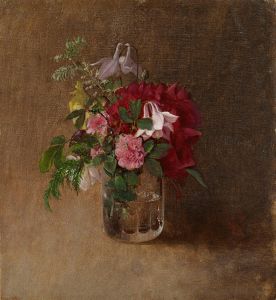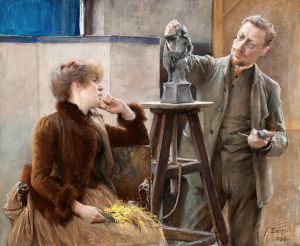
Dead Hare, Study
A hand-painted replica of Albert Edelfelt’s masterpiece Dead Hare, Study, meticulously crafted by professional artists to capture the true essence of the original. Each piece is created with museum-quality canvas and rare mineral pigments, carefully painted by experienced artists with delicate brushstrokes and rich, layered colors to perfectly recreate the texture of the original artwork. Unlike machine-printed reproductions, this hand-painted version brings the painting to life, infused with the artist’s emotions and skill in every stroke. Whether for personal collection or home decoration, it instantly elevates the artistic atmosphere of any space.
Albert Edelfelt was a prominent Finnish painter known for his realistic style and contribution to the Finnish art scene in the late 19th and early 20th centuries. One of his works, "Dead Hare, Study," exemplifies his skill in capturing the nuances of light, texture, and form.
Albert Edelfelt was born on July 21, 1854, in Porvoo, Finland. He studied art in Helsinki and later in Antwerp, before moving to Paris, where he attended the École des Beaux-Arts. In Paris, Edelfelt was influenced by the naturalist movement, which emphasized the depiction of realistic subjects and the careful observation of nature. This influence is evident in his work "Dead Hare, Study."
"Dead Hare, Study" is a still life painting that focuses on a single subject: a hare. The painting is a study, meaning it was likely created as a practice piece to explore the textures and forms of the subject matter. Edelfelt's attention to detail is apparent in the way he renders the fur of the hare, capturing the subtle variations in color and texture. The composition is simple, allowing the viewer to focus entirely on the hare itself.
The painting reflects Edelfelt's interest in realism and his ability to convey the physicality of his subjects. The use of light and shadow in the painting adds depth and dimension, highlighting the contours of the hare's body. Edelfelt's technique demonstrates his mastery of the medium and his keen observational skills.
Throughout his career, Edelfelt was known for his portraits, historical scenes, and landscapes, but he also created a number of still life works. "Dead Hare, Study" fits within this context as an example of his versatility as an artist. While not as widely known as some of his other works, this painting showcases his ability to capture the essence of his subjects with precision and sensitivity.
Edelfelt's contribution to Finnish art was significant. He was one of the first Finnish artists to gain international recognition, and his work helped to elevate the status of Finnish art on the global stage. His paintings often depicted Finnish life and landscapes, contributing to a sense of national identity and pride.
In addition to his artistic achievements, Edelfelt was also involved in the cultural and social life of Finland. He was a member of several art societies and played a role in the development of the Finnish art scene. His influence extended beyond his own work, as he inspired future generations of Finnish artists.
Albert Edelfelt passed away on August 18, 1905, but his legacy continues to be celebrated in Finland and beyond. His works are held in various collections, including the Ateneum Art Museum in Helsinki, which houses a significant number of his paintings.
"Dead Hare, Study" remains a testament to Edelfelt's skill as a painter and his dedication to capturing the beauty and complexity of the natural world. Through his meticulous attention to detail and his ability to convey the essence of his subjects, Edelfelt's work continues to resonate with audiences today.







